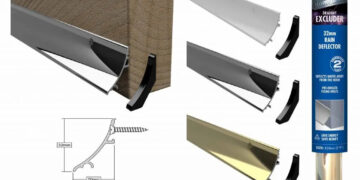
Clothes finishing is a crucial step in textile production that enhances fabric quality, ensuring a better texture, vibrant colors, and long-lasting durability. This process is applied after the fabric is woven or knitted and before it is transformed into garments. Clothes finishing plays a vital role in refining the overall feel and functionality of fabrics, making them softer, more comfortable, and resistant to wear and tear. Without proper finishing, fabrics may feel rough, fade quickly, or weaken over time, reducing their lifespan and appeal. Whether used in everyday apparel, luxury fashion, or custom print clothing, finishing techniques help garments maintain their integrity while improving the final product’s aesthetics and performance.
Clothes finishing significantly improves fabric texture by making materials softer and more comfortable to wear. Raw fabrics often feel stiff or rough due to the manufacturing process, but finishing treatments such as brushing, sanding, and softening make them smoother and more luxurious. These treatments eliminate unwanted stiffness, making garments more breathable and enjoyable to wear. Many finishing processes also add flexibility and elasticity to fabrics, allowing them to drape more naturally and conform to body movements more effectively. This results in a polished, high-quality feel that enhances the overall wearing experience.
Clothes finishing enhances color vibrancy by helping fabrics retain their original shades for a longer period. Dye fixation treatments allow colors to absorb deeply into the fabric, creating rich, bold hues that remain intact even after multiple washes. Without proper finishing, colors may fade quickly due to washing, exposure to sunlight, or friction. Special finishes such as gloss or matte effects can be applied to modify the fabric’s appearance, enhancing the depth and intensity of colors. Finishing treatments ensure that prints and patterns remain visually appealing, keeping garments looking new for a longer time. This is particularly important for fashion and custom print apparel, where maintaining color quality is essential for branding and design purposes.
Clothes finishing improves fabric longevity by strengthening fibers and protecting against common forms of damage. Fabrics are often subjected to daily wear and repeated washing, which can weaken fibers and cause garments to lose their shape. Finishing treatments prevent shrinkage, wrinkling, and deformation, allowing garments to maintain their original fit and structure over time. Anti-pilling treatments prevent the formation of fuzz and lint, which can make clothes look old and worn out. Moisture-resistant and stain-resistant finishes help fabrics repel liquids and dirt, reducing the need for frequent washing and making garments easier to maintain. These enhancements not only extend the life of clothing but also improve the user experience by providing garments that stay fresh and presentable for longer.
Clothes finishing also introduces functional benefits that make fabrics more versatile and practical. Water-resistant and waterproof finishes prevent fabrics from absorbing moisture, making them suitable for outdoor and sportswear. Fire-resistant treatments enhance fabric safety, reducing flammability and making them ideal for specialized workwear. Antibacterial and anti-odor treatments help fabrics stay fresh by preventing the growth of bacteria and odor-causing microbes, a feature commonly used in activewear and undergarments. UV protection treatments help fabrics resist sun damage, preventing color fading and fiber breakdown caused by prolonged exposure to sunlight. Static-reducing treatments eliminate static cling, making garments more comfortable to wear. These added functionalities make clothes more adaptable to different environments, improving their overall usability.
Clothes finishing plays a significant role in custom print apparel by ensuring prints remain sharp, vibrant, and long-lasting. Fabrics that undergo proper finishing provide a smooth and even surface for printing, allowing designs to appear crisp and high-definition. Without finishing treatments, printed designs may crack, fade, or peel off after a few washes, compromising the garment’s aesthetic appeal. Color-locking finishes ensure that printed graphics and text remain bold and intact, preserving the visual quality of the design for an extended period. For businesses and individuals investing in custom print clothing, finishing processes ensure that products not only look professional but also retain their quality over time.
Clothes finishing is essential for ensuring fabric quality, longevity, and performance. It enhances texture by making fabrics softer and more comfortable, ensuring that garments provide a pleasant wearing experience. It preserves color vibrancy, preventing fading and maintaining the richness of dyes and prints. It extends fabric lifespan by protecting against shrinkage, wrinkles, and pilling while adding features such as stain and moisture resistance. Functional treatments like antibacterial, fire-resistant, and UV protection finishes improve the practicality of fabrics, making them suitable for a variety of applications. In custom print apparel, finishing techniques ensure that printed designs remain durable and visually appealing, enhancing the overall quality of the product. Investing in proper clothes finishing techniques is essential for delivering high-quality garments that meet both aesthetic and functional standards, making them more valuable for consumers and businesses alike.
Digital marketing is the use of the internet and electronic devices to promote products or services. It includes tactics like social media ads, email campaigns, search engine optimization (SEO), and online content to connect businesses with potential customers. It's a fast, targeted, and measurable way to reach people where they spend their time—online.















































